
Healthiest Foods For Women
Superfoods for a super you The following healthy power foods can claim big bragging rights: They can fend off serious diseases like diabetes, cancer, and heart disease; fortify your immune system; protect and smooth your skin; and help you lose weight or stay slim. If you're eating most of these healthy foods already, good for you! If not, now's the time to load up your shopping cart and supercharge your health.
Eggs Egg yolks are home to tons of essential but hard-to-get nutrients, including choline, which is linked to lower rates of breast cancer (one yolk supplies 25% of your daily need) and antioxidants that may help prevent macular degeneration and cataracts. Though many of us have shunned whole eggs because of their link to heart disease risk, there′s actually substantial evidence that for most of us, eggs are not harmful but healthy. People with heart disease should limit egg yolks to two a week, but the rest of us can have one whole egg daily; research shows it won′t raise your risk of heart attack or stroke. Make omelets with one whole egg and two whites, and watch cholesterol at other meals.
Greek yogurt Yogurt is a great way to get calcium, and it′s also rich in immune-boosting bacteria. But next time you hit the yogurt aisle, pick up the Greek kind?compared with regular yogurt, it has twice the protein (and 25% of women over 40 don′t get enough). Look for fat-free varieties like Oikos Organic Greek Yogurt (90 calories and 15 g of protein per 5.3-ounce serving).
Fat-free organic milk Yes, it does a body good: Studies show that calcium isn′t just a bone booster but a fat fighter too. Recent research from the University of Tennessee found that obese people who went on a low-calorie, calcium-rich diet lost 70% more weight than those who ate the least. Vitamin D not only allows your body to absorb calcium, it′s also a super nutrient in its own right. Research shows that adequate D levels can reduce heart disease risk, ward off certain types of cancer, relieve back pain, and even help prevent depression, but most of us don′t get nearly enough of the 1,000+ IU daily that most experts recommend. A splash of milk in your morning coffee isn′t enough to provide the calcium and vitamin D you need. Use milk instead of water to make your oatmeal, have a glass with breakfast, or stir some chocolate syrup into it for an after-dinner treat.
Salmon Salmon is a rich source of vitamin D and one of the best sources of omega-3s you can find. These essential fatty acids have a wide range of impressive health benefits? from preventing heart disease to smoothing your skin and aiding weight loss to boosting your mood and minimizing the effects of arthritis. Unfortunately, many Americans aren′t reaping these perks because we′re deficient, which some experts believe may be at the root of many of the big health problems today, like obesity, heart disease, and cancer. Omega-3s also slow the rate of digestion, which makes you feel fuller longer, so you eat fewer calories throughout the day.
Lean beef Lean beef is one of the best-absorbed sources of iron there is. (Too-little iron can cause anemia.) Adding as little as 1 ounce of beef per day can make a big difference in the body′s ability to absorb iron from other sources, says Mary J. Kretsch, PhD, a researcher at the USDA-ARS Western Human Nutrition Research Center in Davis, CA. Beef also packs plenty of zinc (even minor deficiencies may impair memory) and B vitamins, which help your body turn food into energy.
If you can, splurge on grass-fed. Compared with grain-fed beef, it has twice the concentration of vitamin E, a powerful brain-boosting antioxidant. It′s also high in omega-3 fatty acids. Because this type of beef tends to be lower in overall fat, it can be tough′so marinate it, and use a meat thermometer to avoid overcooking.
Beans It′s hard to imagine a more perfect food than beans. One cooked cupful can provide as much as 17 g fiber. They're also loaded with protein and dozens of key nutrients, including a few most women fall short on?calcium, potassium, and magnesium. Studies tie beans to a reduced risk of heart disease, type 2 diabetes, high blood pressure, and breast and colon cancers. The latest dietary guidelines recommend consuming at least 3 cups of beans a week?3 times the measly 1 cup we usually get. Keep your cupboards stocked with all kinds: black, white, kidney, fat-free refried, etc. Use them in salads, stuffed baked potatoes, and veggie chili or pureed for sandwich spreads.
Nuts In a nutshell: USDA researchers say that eating 1? ounces of tree nuts daily can reduce your risk of heart disease and diabetes. Walnuts are rich in omega-3s. Hazelnuts contain arginine, an amino acid that may lower blood pressure. An ounce of almonds has as many heart-healthy polyphenols as a cup of green tea and 1/2 cup of steamed broccoli combined; they may help lower LDL cholesterol as well. The key is moderation, since nuts are high in calories. Keep a jar of chopped nuts in your fridge, and sprinkle a tablespoon on cereal, salads, stir-fries, or yogurt. Or have an ounce as a snack most days of the week.
Edamame and tofu Soy′s days as a cure-all may be over, but edamame still has an important place on your plate. Foods such as tofu, soy milk, and edamame help fight heart disease when they replace fatty meats and cheeses, slashing saturated fat intake. Soy also contains heart-healthy polyunsaturated fats, a good amount of fiber, and some important vitamins. Soy′s isoflavones, or plant estrogens, may also help prevent breast cancer. Some researchers believe these bind with estrogen receptors, reducing your exposure to the more powerful effects of your own estrogen, says Prevention advisor Andrew Weil, MD. But stick with whole soy foods rather than processed foods, like patties or chips, made with soy powder. Don′t take soy supplements, which contain high and possibly dangerous amounts of isoflavones.
Oatmeal Fiber-rich oats are even healthier than the FDA thought when it first stamped them with a heart disease-reducing seal 10 years ago. According to recent research, they can also cut your risk of type 2 diabetes. When Finnish researchers tracked 4,316 men and women over the course of 10 years, they found that people who ate the highest percentage of cereal fiber were 61% less likely to develop type 2 diabetes. To reap the benefits, eat 1/2 cup daily?preferably unsweetened. For a versatile breakfast, top with different combinations of fruit, yogurt, and nuts. You can also use oats to coat fish or chicken or add texture to meatballs.
Flaxseed Flaxseed is the most potent plant source of omega-3 fats. Studies indicate that adding flaxseed to your diet can reduce the development of heart disease by 46%? it helps keep red blood cells from clumping together and forming clots that can block arteries. It may also reduce breast cancer odds. In one study, women who ate 10 g of flaxseed (about 1 rounded tablespoon) every day for 2 months had a 25% improvement in the ratio of breast cancer-protective to breast cancer-promoting chemicals in their blood. Sprinkle 1 to 2 tablespoons of flaxseed a day on your cereal, salad, or yogurt. Buy it preground, and keep it refrigerated.
Olive oil Olive oil is full of heart-healthy monounsaturated fats (MUFAs), which lower "bad" LDL cholesterol and raise "good" HDL cholesterol. It′s rich in antioxidants, which may help reduce the risk of cancer and other chronic diseases, like Alzheimer′s. Look for extra virgin oils for the most antioxidants and flavor. Drizzle small amounts on veggies before roasting; use it to saut? or stir-fry, in dressings and marinades, and to flavor bread at dinner in lieu of a layer of butter or margarine.
Avocado These smooth, buttery fruits are a great source of not only MUFAs but other key nutrients as well. One Ohio State University study found that when avocado was added to salads and salsa, it helped increase the absorption of specific carotenoids, plant compounds linked to lower risk of heart disease and macular degeneration, a leading cause of blindness. "Avocados are packed with heart-protective compounds, such as soluble fiber, vitamin E, folate, and potassium," says Elizabeth Somer, RD, author of 10 Habits That Mess Up a Woman's Diet. But they are a bit high in calories. To avoid weight gain, use avocado in place of another high-fat food or condiment, such as cheese or mayo. (Make the most of your avocado with these 29 delicious avocado recipes.)
Broccoli Pick any life-threatening disease?cancer, heart disease, you name it?and eating more broccoli and its cruciferous cousins may help you beat it, Johns Hopkins research suggests. Averaging just four weekly servings of veggies like broccoli, cabbage, and cauliflower slashed the risk of dying from any disease by 26% among 6,100 people studied for 28 years. For maximum disease-fighting benefits, whip out your old veggie steamer. It turns out that steaming broccoli lightly releases the maximum amount of sulforaphane.
Spinach We?ll spare you the Popeye jokes, but spinach has serious health muscles. For one thing, it contains lots of lutein, the sunshine-yellow pigment found in egg yolks. Aside from guarding against age-related macular degeneration, a leading cause of blindness, lutein may prevent heart attacks by keeping artery walls clear of cholesterol. Spinach is also rich in iron, which helps deliver oxygen to your cells for energy, and folate, a B vitamin that prevents birth defects. Cook frozen spinach leaves (they provide more iron when cooked than raw) and serve as a side dish with dinner a few times a week.
Tomatoes Tomatoes are our most common source of lycopene, an antioxidant that may protect against heart disease and breast cancer. The only problem with tomatoes is that we generally eat them in the form of sugar-loaded jarred spaghetti sauce or as a thin slice in a sandwich. For a healthier side dish idea, quarter plum tomatoes and coat with olive oil, garlic powder, salt, and pepper. Roast in a 400?F oven for 20 minutes, and serve with chicken.
Sweet potatoes One of the best ways to get vitamin A?an essential nutrient that protects and maintains eyes, skin, and the linings of our respiratory, urinary, and intestinal tracts?is from foods containing beta-carotene, which your body converts into the vitamin. Beta carotene-rich foods include carrots, squash, kale, and cantaloupe, but sweet potatoes have among the most. A half-cup serving of these sweet spuds delivers only 130 calories but 80% of the DV of vitamin A. Replace tonight′s fries with one medium baked sweet potato (1,096 mcg) and you′re good to go?and then some.
Garlic Garlic is a flavor essential and a health superstar in its own right. The onion relative contains more than 70 active phytochemicals, including allicin, which studies show may decrease high blood pressure by as much as 30 points. High consumption of garlic lowered rates of ovarian, colorectal, and other cancers, according to a research review in the American Journal of Clinical Nutrition. Allicin also fights infection and bacteria. British researchers gave 146 people either a placebo or a garlic extract for 12 weeks; garlic takers were two-thirds less likely to catch a cold. The key to healthier garlic: Crush the cloves, and let them stand for up to 30 minutes before heating them, which activates and preserves the heart-protecting compounds, according to a 2007 study from Argentina.
Red peppers Citrus fruits get all the credit for vitamin C, but red peppers are actually the best source. Vitamin C may be best known for skin and immunity benefits. Researchers in the United Kingdom looked at vitamin C intake in 4,025 women and found that those who ate more had less wrinkling and dryness. And although getting enough vitamin C won′t prevent you from catching a cold or flu, studies show that it could help you recover faster. Vitamin C has other important credentials, too. Finnish researchers found that men with low levels were 2.4 times likelier to have a stroke, and Australian scientists recently discovered that the antioxidant reduces knee pain by protecting your knees against arthritis.
Figs When you think of potassium-rich produce, figs probably don′t come to mind, but you may be surprised to learn that six fresh figs have 891 mg of the blood pressure-lowering mineral, nearly 20% of your daily need?and about double what you?d find in one large banana. In a recent 5-year study from the Netherlands, high-potassium diets were linked with lower rates of death from all causes in healthy adults age 55 and older. Figs are one of the best fruit sources of calcium, with nearly as much per serving (six figs) as 1/2 cup of fat-free milk. Serve by chopping and adding to yogurt, cottage cheese, oatmeal, or green salads. Or enjoy them as a savory snack: Cut a slit in the side and stuff with 1/2 teaspoon of a low-fat version of a soft cheese such as chevre or Brie.
Blueberries Blueberries may very well be the most potent age-defying food′they′re jam-packed with antioxidants. When researchers at Cornell University tested 25 fruits for these potent compounds, they found that tangy-sweet wild blueberries (which are smaller than their cultivated cousins) packed the most absorbable antioxidants. Research shows a diet rich in blueberries can help with memory loss, prevent urinary tract infections, and relieve eyestrain. Add up to 1/2 cup of blueberries to your diet a day for maximum health benefits, recommends Ronald Prior, PhD, adjunct professor of food science at the University of Arkansas in Fayetteville. This alone provides just about double the amount of antioxidants most Americans get in 1 day.
Asian pears One large Asian pear has a whopping 10 g of cholesterol-lowering fiber, about 40% of your daily need. People who ate the most fiber had the lowest total and LDL cholesterol levels, according to a recent study of Baltimore adults. The same researchers found that people who ate the most fiber also weighed the least and had the lowest body mass index and waist circumference. Serve by dicing it into a salad of Boston lettuce, crumbled goat cheese, walnuts, and mandarin oranges. Or make it a dessert: Add peeled and cored pears to a saucepan with 1 cup white wine, 1 teaspoon honey, 1 teaspoon grated fresh ginger, and enough water to cover the pears. Cover and simmer 40 minutes or until pears are soft.
Pomegranates Packed with antioxidant compounds, pomegranates have long been linked to both heart and brain health. Newer research explains why: One study found pomegranate polyphenols help your arteries expand and contract to manage blood flow and prevent hardening. A separate study found the same antioxidants help ward off the type of inflammation that leads to Alzheimer′s disease. To get the most benefit, eat the fruit′s seeds and some of the pith. Both contain healthful compounds.
Peanut Butter From bone-strengthening magnesium to immunity-boosting B6, peanut butter is loaded with many of the vitamins and minerals your body needs (but probably isn′t getting enough of). Its high fiber and protein content will keep you full for hours, and peanut butter is also a good source of monosaturated fats?proven to help you lose weight and ward off diabetes. Creamy′s fine, but the crunchy kind typically contains more fiber and less sugar.
Mushrooms Healthy mushroom compounds have been shown to lower cholesterol and slow tumor growth associated with some cancers, according to the American Cancer Society. Mushrooms also increase your body′s circulating levels of proteins called interferon, which stop viruses like hepatitis from advancing. They′re also a great, low-calorie stand-in for meat. Whether you plan to gobble shiitakes or white buttons, just make sure you cook them first; their dense cell walls are nearly indigestible if eaten raw.
Lemon Along with its impressive concentrations of vitamin C, lemon′s flavonoid compounds have been shown to have anti-cancer properties. But lemons may be healthiest in a supporting rol
Related News
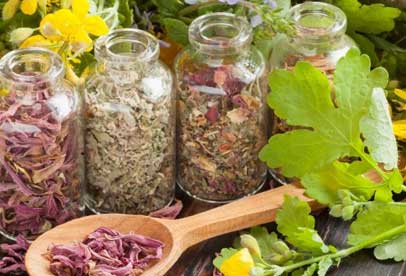
The best effective and natural plants for a good memory

Losing Weight in Hot Weather Made Easy

The Simple 20-Minute Habit That Could Save Your Life
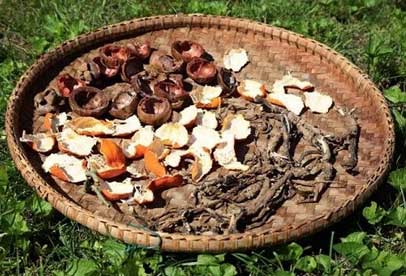
5 Ways to Dry Herbs
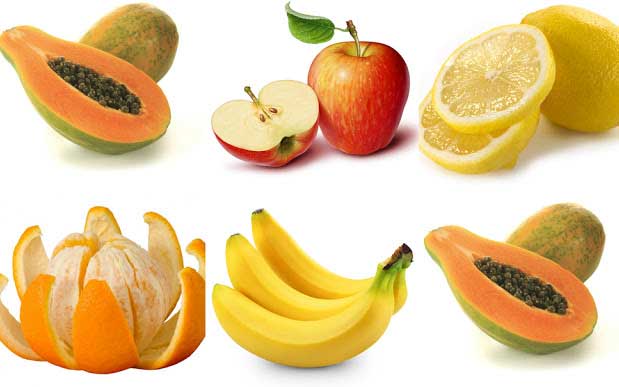
Top 5 foods for glowing skin
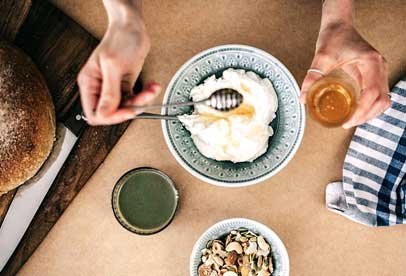
Is This the Best Diet for Post-Menopausal Women?
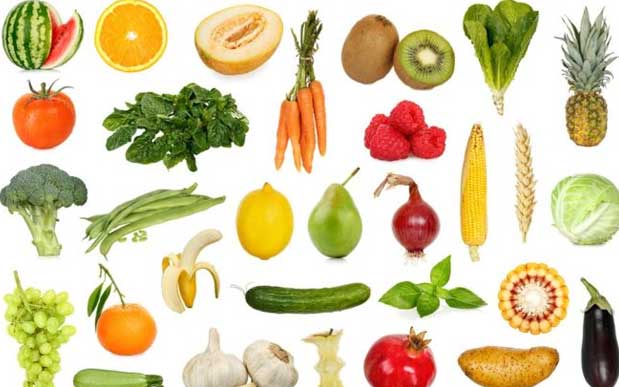
Eat more fruit and veg for a longer life

Scientists found effective dandruff treatment
Most Read
★10 Healthy Twists on Classic Diner Dishes
★This One Exercise Helps You Become a Better Runner
★10 Weight Loss Tips to Make Things Easier (and Faster)
★Guinness World Record for bearded woman Harnaam Kaur
★Why and how exercises reduce the risk of CANCER?
★10 Most Effective Weight Loss Exercises For Torching Fat
★Weight-lifting and protein shakes rich in growth hormones may make you bald
★10 Ways To Use Sesame Oil For Beautiful Skin
★Education can boost men?s chances of online dating
★Heres why you should go sulphate-free with your hair care
★Best foods for healthy skin
★5 superfoods to combat hair loss
★Skin tone linked to fruit and vegetable consumption
★5 Common Mistakes that May Ruin Your Skin
★The Brilliant Food Combo That Helps You Burn More Fat
★Eating Carbs and Fats Before a Workout? Read This
★Using Kalonji Seeds for Weight Loss
★Carbohydrates and sugars
★Eating cheese does not raise cholesterol, study finds
★How mood and eating behaviour are connected
★Fresh fruits and veggies arent always healthier than frozen, scientists say
★Cancer risk of breast implants 10 times higher than first feared
★Flex Your Memory Muscle
★Skinny jeans and big fluffy hoods contribute to back pain
★Legumes, nuts and kale can help you get big muscles
★Scientists found effective dandruff treatment
★9 Simple Yoga Asanas & Tips for Weight Loss
★Expert reveals the snacks you should eat, according to your body type
★5 surprising beauty benefits of amla
★Recycling temple waste along the Ganges with Help Us Green
★Take care of your coloured hair with Wella
★Natural Herbal Gummies
★Numerous health benefits of bitter melon (uses , side effects)
★This is how many calories your tea and coffee habit is adding to your diet EVERY DAY
★Healthy food that tastes good too
★Top Natural Body Care Tips for Women
★4 Foolproof Tips to Make Healthy Veggie Chips at Home
★Can Eating Bananas Help You Lose Weight?
★How to Set Weight-Loss Goals You Can Actually Achieve
★Mushrooms could prevent risk of Dementia, scientists say
★How to Do Face Cleansing at Home?
★8 Best Foods to Eat for Weight Loss
★Know why milk should be a part of your beauty regimen
★Acne sufferers likely to live longer than people with flawless skin
★5 Skincare resolutions for 2019 that you must keep
★Pasta eaters may have better diet quality: study
★How To Achieve The Perfect Nail Shape
★Top 10 Homemade Fruit Packs for Glowing Skin
★Brain health food guide for older adults
★Is This the Best Diet for Post-Menopausal Women?
